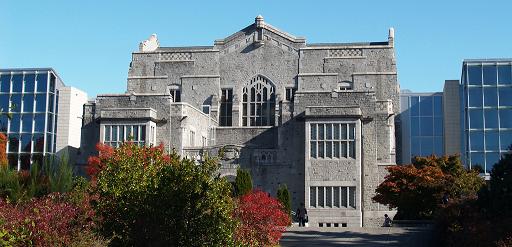In case you missed it, the 50,000th item was added to cIRcle, UBC’s Digital Repository last week!
Check out the 50,000th item in cIRcle below:
Title: Mapping the Garden of Truth: Buddhist and idiosyncratic elements in the religious space of Shinnyo-en
Author: Collins, Casey Ray
URI: https://circle.ubc.ca/handle/2429/52877
Abstract: New Religious Movements (NRMs) are typically understood by observers as deviant, bizarre—even pathological—forms of religion that are born in times of crisis and joined by people in crisis. This understanding, however, overlooks the similarities and often close connections between new movements and more established “parent” traditions. Shinnyo-en is a Buddhist-derived NRM that began in 1930s Japan. It has strong ties to Shingon Buddhism and is also characterized by idiosyncratic practices and an emphasis on its charismatic founding family. Like other Buddhist-derived NRMs, Shinnyo-en is simultaneously contiguous with a parent tradition and distinguished from it. Abandoning the language of pathology, I suggest that we think of NRMs in the modern period as occupying non-locative conceptual “spaces” similar to those of “established” religions, secular spaces, and other ideologies. The very meaning of the name Shinnyo-en 真如苑—the “Garden of Truth,” literally a “borderless garden” (en 苑) of “thusness” (shinnyo 真如, Skt. tathatā)—evokes the image of an expansive, cultivated space. I argue that the space of Shinnyo-en contains two modalities. In its first modality, practitioners and observers see Shinnyo-en as a modernized form of esoteric Buddhism promulgated by the charismatic founding family, which draws on ritual and doctrine inherited from the Shingon school and from Mahāyāna Buddhism generally. In its second modality, initiated practitioners experience Shinnyo-en’s idiosyncrasy, which is a function of unique practices and beliefs that cannot exist apart from the charismatic founding family. The two modalities of the Shinnyo-en tradition are equally important to members, and must be simultaneously kept in mind to best understand this and other Buddhist-derived NRMs. With this map of the Garden of Truth, Shinnyo-en’s idiosyncrasies that have hindered scholarly and popular understanding become more intelligible, especially the profound emphasis on the founding family and the novel practices and hierarchies they introduced.
Degree: Master of Arts – MA
Program: Asian Studies
Collection: Electronic Theses and Dissertations (ETDs) 2008+
Above photo: – Formerly Main Library is courtesy of UBC Library’s Flickr photostream

